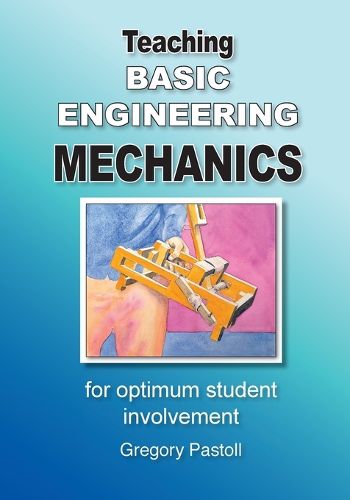Readings Newsletter
Become a Readings Member to make your shopping experience even easier.
Sign in or sign up for free!
You’re not far away from qualifying for FREE standard shipping within Australia
You’ve qualified for FREE standard shipping within Australia
The cart is loading…






This title is printed to order. This book may have been self-published. If so, we cannot guarantee the quality of the content. In the main most books will have gone through the editing process however some may not. We therefore suggest that you be aware of this before ordering this book. If in doubt check either the author or publisher’s details as we are unable to accept any returns unless they are faulty. Please contact us if you have any questions.
This book is intended primarily for instructors of engineering subjects, whether in high school, college or universities. The teaching/learning activities described in the book are based on the author's experience of teaching basic engineering mechanics in a university of technology for 14 years.These teaching/learning activities would also be of interest to teachers in other disciplines, because they result in the optimum involvement of, and active participation by students. The book contains a chapter devoted to each of nine types of learning activity. Some of these are commonly used, while others deserve to be used more often. There are thorough explanations of how best to use each activity. All the advice here comes from experience of testing these methods in practice, further informed by the author's exposure to teaching methods used in several different disciplines, when he was a consultant to university teachers at The University of Cape Town, which position he held for a further 14 years, and in which he was promoted ad hominem for his work in assisting university teachers to improve their teaching.
The nine types of activity explained here include:
How to run effective tutorials by using new stimulus material and having a defined discussion task Exercises in reasoning about mechanical situations, from first principles How to make use of design-and-build projects Using true/false quizzes as the stimulus material for tutorial activities, and to promote self-honesty in students about what they know Using calculation-type exercises as learning events How to use laboratory work effectively The value of issuing short-answer written assignments Predicting the consequences of the operation of real mechanisms Adapting lectures to become learning events rather than teaching events
The book contains 53 illustrations, and many examples of exercises that can be used by instructors without needing to request permissions.
$9.00 standard shipping within Australia
FREE standard shipping within Australia for orders over $100.00
Express & International shipping calculated at checkout
This title is printed to order. This book may have been self-published. If so, we cannot guarantee the quality of the content. In the main most books will have gone through the editing process however some may not. We therefore suggest that you be aware of this before ordering this book. If in doubt check either the author or publisher’s details as we are unable to accept any returns unless they are faulty. Please contact us if you have any questions.
This book is intended primarily for instructors of engineering subjects, whether in high school, college or universities. The teaching/learning activities described in the book are based on the author's experience of teaching basic engineering mechanics in a university of technology for 14 years.These teaching/learning activities would also be of interest to teachers in other disciplines, because they result in the optimum involvement of, and active participation by students. The book contains a chapter devoted to each of nine types of learning activity. Some of these are commonly used, while others deserve to be used more often. There are thorough explanations of how best to use each activity. All the advice here comes from experience of testing these methods in practice, further informed by the author's exposure to teaching methods used in several different disciplines, when he was a consultant to university teachers at The University of Cape Town, which position he held for a further 14 years, and in which he was promoted ad hominem for his work in assisting university teachers to improve their teaching.
The nine types of activity explained here include:
How to run effective tutorials by using new stimulus material and having a defined discussion task Exercises in reasoning about mechanical situations, from first principles How to make use of design-and-build projects Using true/false quizzes as the stimulus material for tutorial activities, and to promote self-honesty in students about what they know Using calculation-type exercises as learning events How to use laboratory work effectively The value of issuing short-answer written assignments Predicting the consequences of the operation of real mechanisms Adapting lectures to become learning events rather than teaching events
The book contains 53 illustrations, and many examples of exercises that can be used by instructors without needing to request permissions.